#bolivian birds
Explore tagged Tumblr posts
Text

Nido de un ave típica de Santa Cruz de la Sierra Bolivia
Nest of a typical bird from Santa Cruz de la Sierra - Bolivia
#bolivia#spanish words#learningspanishonline#bolivian birds#bolivien#spanish vocabulary#bolivianlatinspanish#cultura boliviana#nidos de aves#bird art#bird photography#artists on tumblr
2 notes
·
View notes
Photo

A new variant has been added!
Bolivian Slaty Antshrike (Thamnophilus sticturus) © NINA WENÓLI
It hatches from adjacent, black, colored, dense, nasal, pale, rusty, similar, small, white, and whitish eggs.
squawkoverflow - the ultimate bird collecting game 🥚 hatch ❤️ collect 🤝 connect
8 notes
·
View notes
Text

January 27, 2025 - Forbes's Blackbird (Anumara forbesi) Found in a few scattered areas in eastern and northeastern Brazil, these blackbirds live at the edges of forests, in nearby marshy pastures, and in sugarcane and mango plantations. They eat arthropods, fruit, and possibly nectar, foraging in flocks. Breeding between March and June or August, groups build cup-shaped nests from weed stems and sometimes mud and dung, usually in cultivated mango trees. Females lay clutches of one to four eggs and several adults care for the chicks. They are classified as Vulnerable by the IUCN due primarily to habitat loss in their small range. This bird is part of my yearly tradition of drawing closely related blackbird species on the anniversary of my first bird. Here are the others, if you’d like to see the whole group: Male Brewer’s Blackbird, Female Brewer’s Blackbird, Male Rusty Blackbird, Female Rusty Blackbird, Scrub Blackbird, Melodious Blackbird, Cuban Blackbird, Austral Blackbird, Bolivian Blackbird, Chopi Blackbird, Jamaican Blackbird
179 notes
·
View notes
Text


Miss Universe Bolivia 2023 National Costume
Bolivian Amazonian Warrior
The costume of Miss Bolivia is a cry in defense of the extinction of wild birds endemic to the Bolivian Amazon, but above all in defense of the PARABA BLUE BEARD, a species of showy plumage that inhabits the jungles of the city of Beni. Estefany's social project is based on the protection of the endangered blue paraba, which she honors with this costume. The suit consists of a bodice, miniskirt, figures and anklets, made by artisans originating from their city and who skillfully have embroidered it with seeds of natural trees such as being the sirari and isotohugos and used as a base the jipurises that comes from the bark of the tree of cusi and motacu. it also shows an impressive 2.5 meter tall height made with artificial feathers, this suit is entirely made of recyclable material and does not use wild feathers, on the contrary it shows us that there are other fabric elements as an alternative to natural feathers.The tocado is inspired by the joyful dance of the macheteros and which is part of the culture of the lands of Beni City.
179 notes
·
View notes
Text
Quebracho and Condor Natural Reserve in the Cordillera de Laderas was created on Aug. 24 this year in response to the poisoning deaths of 34 Andean condors two years earlier.
The community of Ladera Norte pushed for their entire territory of nearly 3,300 hectares (8,150 acres) to be designated as a nature reserve, citing the importance of the condor as the national bird.
The reserve also protects the white quebracho, a tree species native to this region of Bolivia, which is threatened by the loss and fragmentation of habitat.
#bolivia#condors#Cordillera de Laderas#animal death#good news#environmentalism#science#nature#environment#animals#conservation#animal protection#urban animals#animal rights#quebracho#endangered animals#endangered species#birds
46 notes
·
View notes
Text
Dust Volume 10, Number 10

The Ex
October closes with a macabre flourish — blackened gardens, elaborate yard displays of skeletons, Halloween, the day of the dead, a terrifying American election. We music lovers react in various ways, some turning to darker, more ominous musical textures, others seeking solace and distraction, still others ignoring the backdrop completely and listening to what they would listen to anyway. And so, we gather another wide-ranging dust, spanning sounds inspired by a Bolivian earthquake, pogo-friendly snappy jangle, a crust supergroup, a celebration of the Ex’s 45 years in music, and much more. This month’s contributors include Jennifer Kelly, Bryon Hayes, Bill Meyer, Jonathan Shaw, Christian Carey, Ray Garraty, Tim Clarke and Ian Mathers.
Alma Laprida — Pitch Dark and Trembling (Outside Time)
youtube
Alma Laprida is an experimental artist and musician from Argentina, here playing a medieval stringed instrument—the tromba marina—through a 21st century array of effects pedals and an 18-inch subwoofer. The instrument, with its yards-long strings and vibrating bridge, is, by itself, capable of unusual sounds. Its natural timbre hovers between a cello and a trumpet. But fed through Laprida’s electronic rig, the sound turns harsh and ominous, blistering and dissolving into tones so low you feel rather than hear them. This album comes from a live performance at Bard College in 2023, taking as its subject Laprida’s experiences during an earthquake in Bolivia. In the long, “Trembling,” low, sustained vibrations make the air tremble, while trebly, metallic sounds skitter and rattle, like pots and pans clattering in the shock. A clock ticks in the foreground, steady on top of roiling, shifting undercurrents. “Vibra,” the other lengthy track, looses then subdues the tromba’s brassy sound, letting the echoes linger for long, not-quite-empty minutes. A corrosive blare interrupts, a foghorn in a world of mists and uncertainty, then clear string tones and its scratching echoes. Pitch Dark and Trembling distills an ambient unease into sound.
Jennifer Kelly
Artificial Go — Hopscotch Fever (Feel It / Future Shock)
This Cincinnati quartet produce a short, sharp brand of post-punk that induces spontaneous pogoing. Hopscotch Fever is Artificial Go’s debut, but it could easily be mistaken for an unearthed gem from late-1970s England with its snappy rhythms and chiming, angular guitars. Vocalist Angie Wilcutt (Corker) adopts an English accent as she sings charmingly, her lyrics unfolding in an energy-filled stream of consciousness that keeps pace with the bouncy backbeat of songs like “Payphone,” “Aphrodisiac,” and the band’s calling card “Artificial Go.” Cole Gilfilen (Corker, The Drin), Micah Wu, and Claudio Thornburgh round out the band’s lineup. Like a game of hopscotch, their churning jangle is a lot of fun but comes to a halt far too quickly. Hopscotch Fever is full of earworms. Its effervescent spirit lingers in our brains long after the music stops.
Bryon Hayes
Black Toska—The Orphan (Self-Release)
The Madrileño goth punks in Black Toska return with six more haunted, synth-swathed, night visions, revisiting a sound Dusted described in early 2023 as “like John Spencer without all the arch theatricality or Rocket 808 in less of a growl and more of a croon.” If anything The Orphan is even more ominous than Dandelion was, with corrosive guitar sound tripping a hole in “Little Dead Bird” and a fever-dream unease percolating through “The Only Thing We Need.” The best cut is the title track, intimating baroque dangers its flowers-of-evil flare of wah wah and mannered vocal melody. “Who can steal a baby?” asks Victor Garcia, his elegant, jaded voice hemmed in by wild surges of electrified dissonance, as you’re left to consider that bad things—and compelling music—flourish in the shadows.
Jennifer Kelly
Paul Bryan — Western Electric (Paul Bryan Music)
The title might cue you to ponder your power situation, but the intent is more oblique. Bassist-programmer-producer Paul Bryan took Sonny Rollins’ Way Out West, an exercise in restriction that happened to open doors of conceptual opportunity for everyone who was feeling confined by the piano’s roll as the chord cop of bebop. But Bryan, whose cv. includes production and arrangement work with Jeff Parker, Josh Johnson, and Aimee Mann, is a plugged-in kind of guy, so his restriction involved writing the material on a little Yamaha keyboard and recording it with a trio comprising Jay Belleroe on drums and Josh Johnson on alto sax. Since you can’t completely separate a studio dude from his gear, there’s some processing and programmed drum, which results in the album having a soft jazz-funk feel that is uncluttered, but hardly minimal. Western Electric is the answer to a question that few might ask; what if you subtracted the guitar and the layered production from Jeff Parker’s New Breed?
Bill Meyer
CPC Gangbangs — Roadhouse (Slovenly)
CPC Gangbangs is back after a long hiatus and not a bit tamed. The Montreal garage punks with ties to Les Sexareenos and Spaceshit flared out in 2007 and reappeared (some of them) as Red Mass. But 17 years later and without explanation, they bash and slam and clatter again, serving up two covers and one original, all flayed and confrontational like it’s the rock-is-back aughts all over again. CPC Gangbangs jack up Louisiana swamp rock “Going Back to Philly” on agitated city-boy jitters. They blast through “Rock ‘n Roll Enemy #1” from the SF proto-punks Crime with furious intent. They haunt Bo Diddley’s grave site with a rackety beat in “Roadhouse.” It’s referential but never reverent, well-informed but never studious, good stuff.
Jennifer Kelly
Deadform — Entrenched in Hell (Tankcrimes)
youtube
Sort of stupid to reference the notion of “supergroup” in relation to a subgenre as witheringly anti-commercial as crust, but Deadform hits all the right notes, as it were: three dudes who have Oakland’s concrete ground into their bodies, and who have played crucial roles in bands as storied as Dystopia, Stormcrow and Laudanum. Dino Sommese (of Dystopia, and also Noothgrush and Ghoul) has the most recognizable name, for listeners beyond the Bay Area and outside of crust’s stinky, dirty milieu, and he pounds the skins and hollers with energy belying his 50-some-odd years. But all the players (including Brian Clouse and Judd Hawk) are all in. Entrenched in Hell doesn’t move beyond crust’s characteristic properties: lotsa nasty metal-tinged guitar parts, some sludgy yuck clotting up the bloodstream, the smell of filthy dreadlocks, and so on. It’s a heavy record, the second half of which hits especially hard. Check out “Peacekeeper” and especially “Fetid Breath.” Then pick yourself up off the dank floor of whatever squat you passed out in and play the tunes again.
Jonathan Shaw
Efterklang — Things We Have in Common (City Slang)
Danish post-rock band Efterklang has been releasing recordings for 20 years, as well as producing an opera in 2015 and making music through core members’ side projects. Things We Have in Common is the culmination of a trio of albums, beginning with Altid Sammen (2017) and continuing with Windflowers (2021). This time out, the group doesn’t eschew its characteristic experimentation, but several of the songs evince a gentle, art pop vibe, particularly “Plant” on which singer/cellist Mabe Fratti guests, “Getting Reminders,” with Beirut and “Animated Heart,” featuring the choir Sønderjysk Pigekor. Efterklang on its own is persuasive too. “Shelf Break” has an artful use of vocoder against oscillating synths and abundantly syncopated percussion. “Leave It All Behind” combines whispered vocals, keyboard arpeggiations, sustained sine tones and a drum thwack on alternating beats. Taken as part of the trio of recordings, Things We Have in Common is its hopeful conclusion.
Christian Carey
The Ex — Great! / The Evidence (Ex Records)
youtube
In 2024, the Ex are celebrating their 45th year by putting out their first new music in six years. It’s just two songs on a 45-rpm record (although they’re also throwing a celebratory shindig in Amsterdam and Mechelen late in November). Not many bands last 45 years, and of those that do, it’s pretty rare for them to put out work you’d want to hear as much as the songs that first drew you into their camp. The Ex are not a common band. The quartet of Terrie Hessels, Andy Moor, Arnold de Boer, and Katherina Bornefeld are still engaged with the moment; the words to these two song address current realities with a combination of elliptical expression and blunt veracity. They’re still engaged with each other, locking into these tough, intricate, but fat-free tunes with combustible chemistry intact. And they’re still tuned into the joy and outrage that’s infused their work across four and a half decades. That’s pretty rare.
Bill Meyer
Jill Fraser— Earthly Pleasures (Drag City)
Electronic composer Jill Fraser has been making music for commercials and films, as well as performing New Age pieces live, since the 1970s. Earthly Pleasures is her first album release in a while. It demonstrates her versatility with vintage gear such as the 1978 Serge Modular synth and newer resources such as Ableton Push 3. “When We Get to Heaven” is a ten-minute long track that uses these resources to make a diaphanously appealing arrangement. “Amen 1” and “Amen 2” are more aphoristic, the first with clouds of harmony and a sci-fi sounding ascent, the second with sparking bell timbres, oscillating percussion, sampled voices, and a fluid keyboard part. Earthly Pleasures closes with “I Stand Amazed,” with trebly, widely spaced synths. Fraser has suggested that the theme of this album is, “What happens to our music when we die?” History suggests that mileage varies, but while she is earthbound, one hopes Fraser has more recordings to share.
Christian Carey
Häxenzijrkell — Portal (Amor Fati)
German maestros of bummer black metal Häxenzijrkell are back with another slab of downtempo musical maelstroms, engineered to drag you into a terrible, soul crushing void. That description and the band’s sonic profile sound a lot like blackened doom, but somehow the music on Portal scans as straight-up black metal — at least to this reviewer’s ears. The best tracks are at the end of the record: “Assiah” and “Aeon” drone, churn and distend like the effects of some of that legendary brown acid, which we aren’t supposed to eat. There’s nothing especially lysergic (to invoke that too-trivially used term) about the textures or production of Portal. It’s more the nightmarishness of the tunes, the mechanical edges on the band’s sound, the taste of something metallic at the back of the tongue — all that stuff accumulates, alongside the deliberate, glacial progress of the songs. Soon that glistening, awful wall of ice looms over you. You can see your face on its glassy surface. You know it’s a bad idea to stare, but you can’t help yourself. It’s excruciating. It’s entrancing. You are through the Portal.
Jonathan Shaw
Boldy James & Harry Fraud — The Bricktionary (Boldy James / SRFSCHL)
youtube
The Bricktionary is the fourth Boldy James’ tape this year and apparently not the final one. The producer Harry Fraud has also been too busy lately, spreading himself too thin. The good news is that Boldy is good even on generic beats (probably half of his output has been on some unknown guys’ production). It’s the kind of street music which never forgets that it’s an art and not a report card. The best track here is “Shadowboxing.”
Ray Garraty
Danny Kamins — Retainer (Sound Holes)
“Solo Horn,” declares the J-card art, and it does not lie. This tape presents Texan Danny Kamins playing sopranino and baritone saxophones at home, alone. It would appear that he spent his lockdown time developing his circular breathing. On the small horn, his examinations of patterns that subtly vary and throw off flurries of orbiting overtones feels like an homage to Evan Parker’ solo soprano work. Parker got there first with such authority that he has made it hard for other people to do it and not simply sound like him. Kamins sounds great but doesn’t quite overcome the challenge of differentiation. The baritone is another matter. Kamins sculpts massive ribbons of tunneling, rippling sound to consistently compelling effect.
Bill Meyer
Seiji Murayama / Jean-Luc Guionnet — Balcony Inside (Ftarri)
Multi-instrumentalist, graphic artist, composer, improviser, film-maker, etc.; Jean-Luc Guionnet is a confirmed polymath. On Balcony Inside he and frequent collaborator Suijiro Murayama perform a duet for church organ (Guionnet) and snare drum, cymbal and voice (Muriyama). But it might be more accurate to say that they play with space. There’s the apparently capacious interior of the Taborkirche, which Guionnet represents with massive chords that beat against the walls. And there’s the space inside your head, which is likely to be rearranged by Muriyama’s horror-movie-victim cries and emphatic, elastically rhythmic beats. A seasonal suggestion: pipe this music loudly out of your house on Halloween, and keep a tally of how many are drawn by these massive sounds and how many avoid your house.
Bill Meyer
The Necks — Bleed (Northern Spy)
youtube
It’s impossible to guess where The Necks might head next, whether live or on record. Their new album, Bleed,is a single 42-minute track that unfolds patiently in an episodic fashion. There are no conventional rhythms from Tony Buck; instead, he punctuates the space with chimes, bowed cymbals and snare and tom rolls that suggest something ominous is about to happen. Sparse, sustained piano notes from Chris Abrahams are left to hang in the air — listen carefully and you can hear breathing in the room — or Abrahams switches to organ and projects pulsing clusters of notes into stereo space. In an unexpected turn, an electric guitar appears, with accompanying tube amp hum. Lloyd Swanton’s bass is largely absent, save for occasional isolated octave plucks, or some ominous bowing. When the piece coalesces in its final stretch with two piano chords, bass and guitar, the music is begging to continue in this vein for at least twice as long as it does but is cruelly cut short. That’s The Necks for you: always expansive, always surprising, always tapping into music’s eternal potential.
Tim Clarke
Rich the Factor — The North Face Whale, Vol. 3 (WE MFR)
youtube
We mostly listen to Rich the Facc’s music because of his gruff voice. The North Face Whale, Vol. 3 is another sample of his voice. The big mistake would be to try to pay attention to what he’s saying on these songs. It is some usual nonsense about how he’s “on money mission, not on dummy mission.” Even after dozens of replays no song off this tape stays in memory. But it’s fine. You have only one question: how is The North Face Whale, Vol. 3 any different from Vol. 1 and Vol. 2?
Ray Garraty
Colin Andrew Sheffield — Moments Lost (Sublime Retreat)
Sound source resonates with subject on this brief minimax (a 3” CD embedded in a 5” plastic disc) CD made by Colin Andrew Sheffield, an electronic musician who resides in Austin TX. Sheffield’s preferred method is plunderphonics; he mines his own media collection for sounds to be procured and (most of the time) processed into music of his own. Moments Lost is a soundtrack made from soundtracks. Sheffield has marshalled a mass of samples from movies, mostly string passages that imply moments of pause, reflection, transition and loss, and layered and sequenced them into a 20.33” sequence of sounds daub association and reverie like a painter might daub paint. Played at low volume, it could be your next go-to ambient recording. But if you spend time listening closely, perhaps while peering at the sleeve’s stills from a film that Sheffield played along with the music when he first presented it at the Molten Plains Festival in Denton in 2023, you might find your physique and consciousness sinking deep while you hit the play button over and over.
Bill Meyer
Chelsea Wolfe — She Reaches Out to She Reaches Out to She (Loma Vista)
youtube
Considering Chelsea Wolfe hasn’t put out a solo LP since 2019’s Birth of Violence, and that was basically a folk record, casual fans may well wonder what kind of upheavals led to this very different seventh album. On a personal level there have been plenty (sobriety, relationships changing, learning to live alone, etc) and that combined with additional pandemic time spent working on the demos led to Wolfe going in a more electronic direction and deliberately seeking an outside producer (Dave Sitek of TV on the Radio, many others) to transform the songs. The result is further in a darkwave/trip-hop direction than the already protean Wolfe has previously gone, and also one of her most consistently engaging records. Whether on the noisier, spikier bursts of “Whispers in the Echochamber” and “Eyes Light Nightshade” or the more delicate likes of “The Liminal” and “Place in the Sun,” there’s a beautifully sung and relentless Gothic vibe to the whole thing that’s extremely satisfying. Wolfe may well choose to move on again after this, but it’ll be a bit of a shame if she does.
Ian Mathers
#dusted magazine#dust#alma laprida#jennifer kelly#artificial go#bryan hayes#paul bryan#bill meyer#cpc gangbangs#deadform#jonathan shaw#efterklang#christian carey#the ex#jill fraser#Häxenzijrkell#boldy james#ray garraty#danny kamins#Seiji Murayama#the necks#tim clarke#rich the factor#colin andrew sheffield#chelsea wolfe#ian mathers
7 notes
·
View notes
Text
Did you know that flamingos might have inspired the myth of the Phoenix? There are three types of volcano flamingos that nest near volcanos in South America; the Andean, the Chilean, and the James's flamingo.
They build their nests in hot, usually uninhabitable areas, where the chicks hatch with their gray feathers. Later, through their diet, the flamingos turn a familiar pink due to their diet of shrimp.
It isn't hard to see how someone in the past could consider them birds of fire who are reborn from ash!
Pictures by me!


2 notes
·
View notes
Text
This is to explain about my fic. I recommend reading it first:
Because I put several Easter eggs, references, and other things you may didn't notice on the first reading.
I try to be careful here, with how/what I write - especially as I'm speaking about religious and culture I'm not a part of. Also, please consider that I don't speak Spanish and that English is a second language for me.
However, I tried to learn and educate myself. I tried looking for mexican writers, and looking more for what PEOPLE said, instead of researchers.
If I wronged anything, please let me know! I'm open to fixing and learning.
Short bits:
1. "His mom's culture" - I HC Katherine Todd as For this fic (and several others) I went with Mexican, because it worked better with my ideas.
2. "Santa Muerte" - Nuestra Señora de la Santa Muerte (Our Lady of Holy Death). Some celebrate her day on August 15th.
3. "Catrina" - refer to "La Calavera Catrina" ("The Dapper [female] Skull"). Hispanic version of Katherine.
4. "there are more things on heaven and earth"
5. Abchanchu.
6. la Llorona
7. wak-wak
8. Camazotz + "getting his head turned to a basketball"
9. "Say hi to the big guy for me"
10. He met his mother
11. "He wakes up... 6 months and 5 days later"
More detailed:
2. "As Señora de la Noche ("Lady of the Night"), she is often invoked by those exposed to the dangers of working at night, such as taxi drivers, bar owners, police, soldiers, and prostitutes. As such, devotees believe she can protect against assaults, accidents, gun violence, and all types of violent death."...
"Santa Muerte also has a saint's day, which varies from shrine to shrine. The most prominent is November 1... Others celebrate her day on August 15."
Another reason I focused on Santa Muerta was her being very important to the "lower classes". It works well with the way I see this universe and Urban fantasy. It actually got so long, I had to make it into a whole post.
3. "Catrina" is a version of 'Katherine' - that also means pure, unsullied. I HC her as an immigrant, and therefore wasn't probably originally called "Katherine" - but started using it in USA, as she try to 'blend in', or just as a preferred "mistaken name".
4. Shakespeare quote!
4.5. "crime ally attracts all sorts of beings" - I have a separate post about the worldbuilding.
5. Abchanchu - "a legendary Bolivian vampire who shapeshifts into the form of a helpless, elderly traveler. When a passerby offers to help him, Abchanchu victimizes him and drinks his blood" (wiki)
6. la Llorona - ("The Weeping Woman" or "The Wailer") is a Mexican mythical vengeful ghost who is said to roam near bodies of water mourning her children whom she drowned because they had no food.
7. wak-wak - "a vampiric, bird-like creature in Philippine mythology. It is said to snatch humans at night as prey".
Honestly? The moment I read about it, I was like - "yea, it's perfect for the worldbuilding". Why wouldn't people believe Batman is a wakwak? We have here the vampire features (bat), but also birdy, "snatch humans at night", cryptid.
(Another bonus? Remind me of the word "Witwat". If you read my fic "Witwat and the Jin" you understand why I associate it with Batman)
8. Camazotz - In the Late Post-Classic Maya mythology of the Popol Vuh, Camazotz is a bat spirit at the service of the lords of the underworld. Camazotz means "death bat" in the Kʼicheʼ language. In Mesoamerica generally, the bat is often associated with night, death, and sacrifice.
Do I have to explain?
*8. "getting his head turned to a basketball" - there's a story where the Maya hero-twins Hunahpu and Xbalanque go to the underworld. They have to stay for the night in 'the house of bats' and hide themselves inside their weapons. Hunahpu stuck his head out to see if it's day, and one of the bats snatch his head and hang it as a ball for the gods to play with.
(I hope I'm not too wrong here).
So, 1- kids like disgusting things. 2 - think about Kid!Jason, who grew up with this story in his head, being taken away by The Bat to HIS HOUSE. (He was probably terrified af).
9. "Say hi to the big guy for me" - a quote from the Joker. I built a tiny parallel here - it's the last thing he here before he dies (Joker) and before he re-lives (His mom).
10. I sort of use it as an anthropomorphism - I don't go into religion here. I see it as - faith and beliefs and community can turn into something. I see it as one face of Death, but also different. idk. I hope it's understandable.
11. Jason died on April 26/7th. He comes back to life on October 31/November 1st - AKA Día de los Muertos. But, as I understand, Mexican tradition has 2 days - November 1st honors the souls of children (día de los angelitos), and November 2nd remembers the souls of adults.
So - Jason, on the edge of adulthood, comes back to life on the day of the angels, but crawls out of his grave on the day of the adults.
[better explanation:
and with photos: https://danestrom.com/dia-de-los-angelitos-remembering-children-day-dead/ ]
#batman#jason todd#red hood#crime alley#resurrection#Camazotz#Abchanchu#la Santa Muerte#La Calavera Catrina#mythology#mexico#Latino jason todd#Día de los Muertos#día de los angelitos#fic recs#fic analayzis#my writing
31 notes
·
View notes
Text


just learned that they also call the urutau “mother-of-the-moon” <3
it has such a melancholic singing that in the bolivian amazon it is believed that it is an indigenous girl that was transformed into a bird by her jealous father so she would not tell to her tribe that he had killed her lover
for the brazilian tupi, it is believed to be a bird that protects a girls chastity <3
10 notes
·
View notes
Text

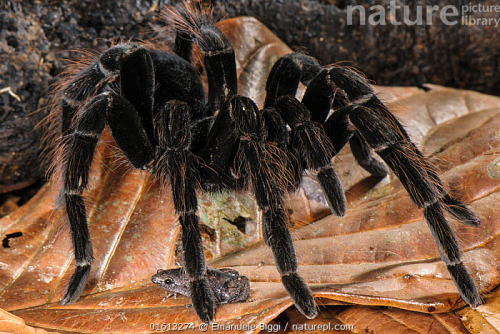

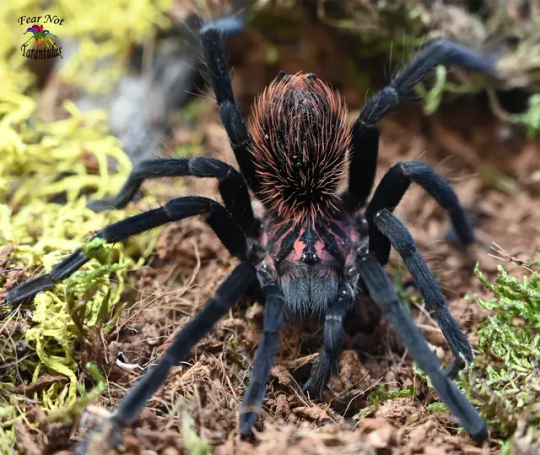
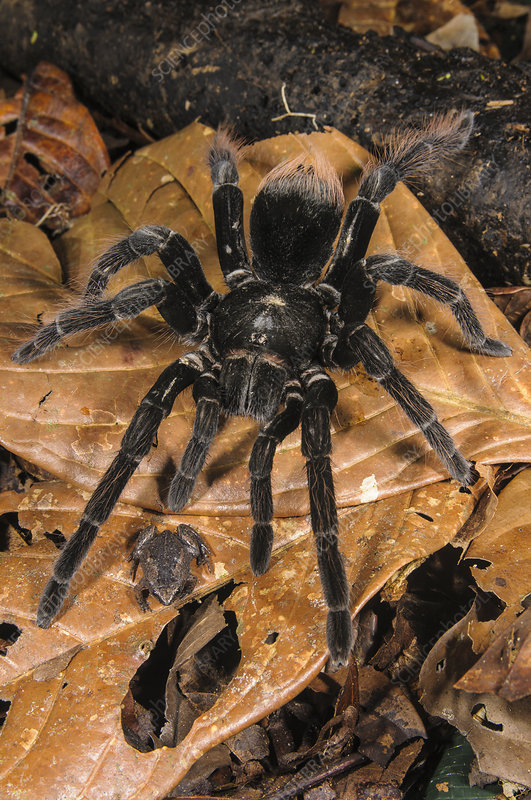
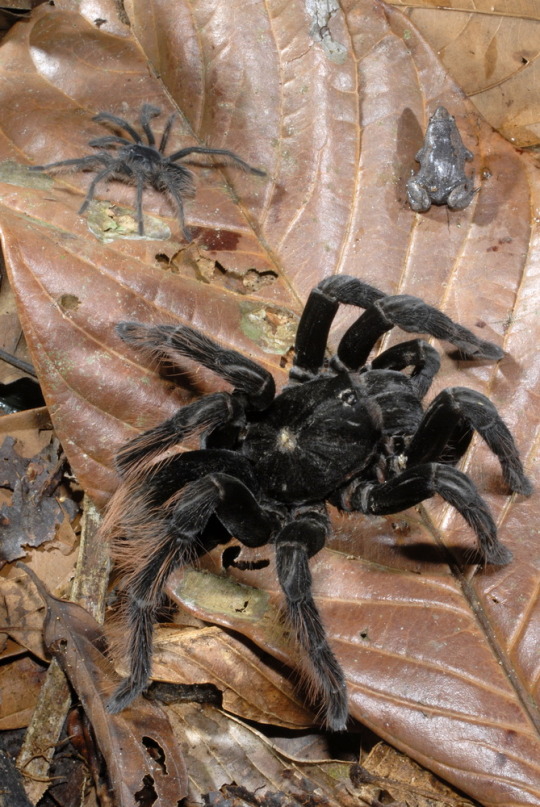
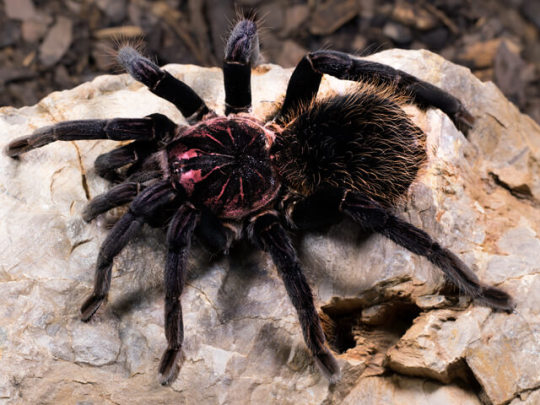

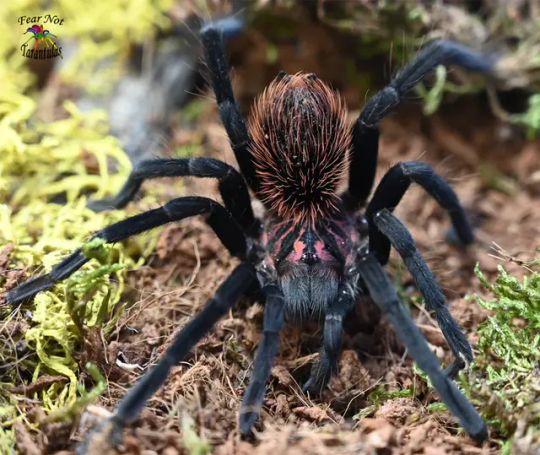


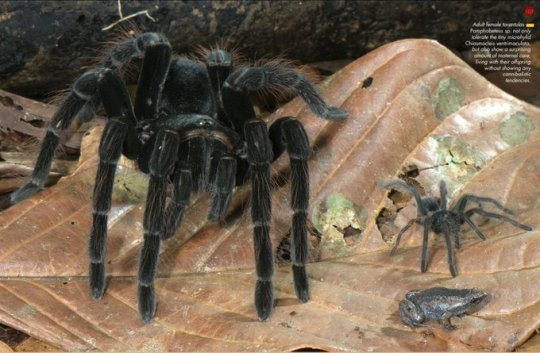


Xenesthis immanis, better known as the Colombian lesser black tarantula, is a species of terrestrial bird spider endemic to the lowland rainforests, marshes, swamps, and cloud forests of Colombia, Venezuela, and Peru. Like many tarantulas these spiders will dig fairly spacious burrows which they may line with silk to stabilize the walls and improve structural integrity. Here they spend most of the day venturing out at night in search of prey: typically crickets, cockroaches, beetles, centipedes, millipedes, and other spiders as well as the occasional rodent, bat, lizard, snake, or small bird. They dispatch said prey using powerful chelicerae tipped with long chitinous fangs that can inject a mild venom. As previously mentioned the Colombian lesser black tarantula has a symbiotic relationship with the dotting humming frog. The two species frequently live together, with the tarantula sharing its food with the amphibian and protecting it from predators, whilst the frogs care for the tarantulas eggs and protect the spider and its burrow from various pests. Colombian lesser black tarantulas are also known to sport a similar relationship with the Bolivian Bleating Frog: Hamptophryne boliviana. In some cases a tarantula may share its burrow with both amphibian species. Reaching some 7 to 9 inches (17.78 to 22.86cms) in length, they are a relatively large species of spiders. Females sport a dark purple colored carapace with long black velvet legs and an abdomen is covered in long blondish setae hairs. Whilst males are smaller with a brighter purple colored carapace and legs and more redish setae hairs on the abdomen. They are equipped with urticating hairs on their abdomens which they can rub off into the air to deter would be predators. These bristles can be quite irritating especially if they get it the nose, mouth, or eyes. Mating typically occurs once a year, during which time a male will seek out a female. When they meet he will perform a series of signals to lull the female into a calm and aroused state, once she is receptive he will mate as quickly as possible and then flee. Unlike many other species of spiders Colombian lesser black tarantulas rarely eat there mate. After mating a female Colombian lesser black tarantula will lay 50 to 100 eggs in a silken egg sac which will hatch in six to eight weeks. The young spiderlings remain in the burrow for some time after hatching being guarded and cared for by there mother and her associated frogs. Under ideal conditions a Colombian lesser black tarantula may live up to 15 years.
#pleistocene pride#pliestocene pride#pleistocene#pliestocene#cenozoic#spider#bug#frog#colombian lesser black tarantula#dotted humming frog#tarantula
5 notes
·
View notes
Text
Nothing contains me, I contain nothing.
And my roots? untied —like birds— they go about free.
— Vilma Tapia, Andean Journeys: A Bilingual Anthology of Contemporary Bolivian Poetry, (2011)
7 notes
·
View notes
Note
Hi, first of all thank for all you do. I was wondering if you could help me an actress aged between 35-42 that have action ressource and can fit in a universe similar to the transformers universe. Thanks
Danai Gurira (1978) Shona Zimbabwean - The Walking Dead, Black Panther.
Lauren Ridloff (1978) African-American / Mexican - is deaf - Externals, The Waking Dead.
Stephanie Beatriz (1981) Colombian [German, one quarter Sephardi Jewish, Dutch, Spanish, Basque, possibly other] / Bolivian [Spanish, Indigenous, Basque, possibly other] - Twisted Metal.
Maggie Q (1979) Vietnamese / Polish, as well as Irish and French - Designated Survivor, The Protégé.
Krysten Ritter (1981) - Jessica Jones.
Melanie Scrofano (1981) - Wynonna Earp.
Jessica Alba (1981) Mexican [including Spanish, Indigenous Mexican/Mayan, and distant Sephardi Jewish] / Danish, Welsh, English, Scottish, Scots-Irish/Northern Irish, French - L.A.'s Finest.
Jamie Chung (1983) Korean - The Misfits.
Mary Elizabeth Winstead (1984) - Kate, Birds of Prey.
DeWanda Wise (1984) African-American - Jurassic World Dominion.
Betty Gilpin (1986) - The Hunt.
Jodie Turner-Smith (1986) Afro Jamaican - Without Remorse.
Some of these aren't 100% the universe vibe but can totally still work!
2 notes
·
View notes
Text
Remember that poll thing I did? Well, I got around to finishing Catalina's thingy!
Catalina Espejo Merlo Salazar
Background:
Her parents met in Austin, Texas while grabbing breakfast. They had ordered the same thing and gotten into an argument over who the order belonged to.
Once they realized their mutual mistake, Catalina's father (Simón Wayra Merlo) had offered to pay for her mother's (Nina Santana Salazar) lunch. That became their first date, and they loved each other ever since.
Catalina was born on October 21st in Austin, being named after the restaurant her parents met at. While her first name is just a Spanish form for "Catherine", her second name means "mirror"! They initially thought she was going to be a twin, which is where that came from.
She grew up deeply connected with Bolivian culture, being taught to never hide her roots. This was mainly instilled in her by her father, as her mother wanted her family to stay safe.
Her father died on her 17th birthday. No one knew what had caused it, but they were told it was something affecting his heart.
It was a difficult time for Catalina and her mom, and stress piled on. Catalina's ability to sense souls worsened, making it unbearable for her to be near anyone.
Soon, she began to isolate herself more and more. She only applied for colleges because of her mom.
She met Anika through one of these colleges, both being paired up as roommates. Maybe it was because they were communicating online, but something clicked for both of them.
By the time she went off to college, Catalina had the energy to talk to people outside of her family again. Meeting Anika in real life just made things better for her, as she felt she could focus near her.
Catalina initially went into college wanting to be a museum curator, so she went for archaeology. This led her down a rabbit hole of studying folklore and religion just to understand her classes, and she was entranced by the human aspects of it. So she ended up switching her major to anthropology.
Fun Facts:
Favorite Color: Black
Favorite Mammal: Cat
Favorite Non-mammal: White-browed Meadowlark
Favorite Plant: Chamomile
Favorite Food: Tucumanas
Favorite Snack: Pomegranate Seeds
Favorite State of Matter: Solid
Favorite Memory: Aseem seeing her sitting at the park, recognizing her, and going over to talk to her for the first time. This occurred only after one conversation with him weeks prior, where they talked about a video game they both liked.
Greatest Intangible Fear: Forgetting Her Entire Life (Memory Loss)
Greatest Tangible Fear: Flying Objects (Birds, Insects, etc)
#catalina salazar#mentioning: anika amador. aseem blum#de manes et homines#oc crap#original character#character intro#maxxie talks#maxxie writes#bold text#tw food#tw death#tw depression#< those are basically trigger warnings for dmeh ngl#along with other things i haven't gotten to yet#let me know if anything else needs to get tagged
1 note
·
View note
Text
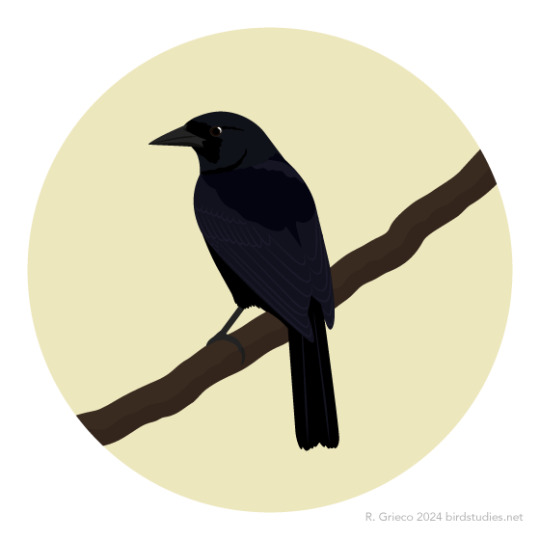
January 27, 2024 - Jamaican Blackbird (Nesopsar nigerrimus) Found only in Jamaica, these blackbirds live in wet mountain forests. They mostly eat insects and other invertebrates, as well as small frogs and lizards and some berries, often foraging in bromeliads and moss while climbing up tree trunks and branches. Breeding between May and July, females build bulky cup-shaped nests from orchids and rootlets on trees, often under bromeliads. They lay clutches of two eggs and incubate them alone, though both parents feed the chicks and protect the nests. Classified as Endangered by the IUCN, their population is declining due to habitat loss in their small and fragmented range, especially from bauxite mining, agriculture, and the charcoal industry. This bird is part of my yearly tradition of drawing closely related blackbird species on the anniversary of my first bird. Here are the others, if you’d like to see the whole group: Male Brewer’s Blackbird, Female Brewer’s Blackbird, Male Rusty Blackbird, Female Rusty Blackbird, Scrub Blackbird, Melodious Blackbird, Cuban Blackbird, Austral Blackbird, Bolivian Blackbird, Chopi Blackbird
69 notes
·
View notes
Text
Friday, November 29, 2024
“It’s a bird! It’s a plane!” In Alaska, it’s both. (AP) Thanks to the Alaska Turkey Bomb, people living in the rural areas of Alaska will still be able to enjoy turkey on Thanksgiving day. For the third straight year, a resident named Esther Keim has been flying low and slow in a small plane over rural parts of south-central Alaska, dropping frozen turkeys to those who can’t simply run out to the grocery store. Alaska is mostly wilderness, with only about 20% of it accessible by road.
Two Presidents, Two Policies: America in Transition (NYT) The old adage about the interregnum between an election and an inauguration is that there is only one president at a time. Try telling that to the rest of the world now. While one president, the one actually still living in the White House, attends international summit meetings and brokers a Middle East cease-fire to cap his tenure, another president, the one who has not actually taken office yet, is busy conducting a foreign policy of his own from his Spanish-tiled Florida estate. Without waiting to be sworn in, President-elect Donald J. Trump effectively declared a trade war this week by announcing that he would impose tariffs on America’s friends, Canada and Mexico, as well as its rival China on Day 1 of his administration. The next day, President Biden strode into the Rose Garden to announce an agreement to end more than a year of fighting between Israel and Hezbollah. This is America in the time of transition, making peace and declaring war, all in the same 24-hour news cycle—two presidents leading the country in two different directions, one officially, the other unofficially; one representing the past and present, the other the future. Whipsawed and maybe just a little confused, foreign leaders are left to calculate whether it makes sense to try to get something done with the outgoing leader or brace for the reality of his successor.
Several Trump Administration Picks Face Bomb Threats and ‘Swatting’ (NYT) Several of the people President-elect Donald J. Trump has picked to be cabinet nominees or for White House positions received threats on Tuesday night and Wednesday morning, a transition spokeswoman said. The spokeswoman, Karoline Leavitt, said several cabinet nominees and others were targeted with “violent, un-American threats to their lives and those who live with them.” Law enforcement and other authorities “acted quickly to ensure the safety of those who were targeted,” she added. The F.B.I. said in a statement it was aware of the bomb threats and so-called swatting calls, which entail contacting law enforcement to falsely claim a dangerous person is at a particular address. Such calls are designed to create a frantic armed police response to frighten, harass and endanger someone at their home. Bomb threats and swatting calls are a growing problem for American law enforcement, as it has become easier to anonymously contact the authorities or leave threatening messages. Prominent public officials, schools and celebrities are often victims.
‘Everything is expensive!’ Bolivia faces a shocking economic collapse (AP) Fuel is rapidly becoming one of Bolivia’s scarcest commodities. Long lines of vehicles snake for several kilometers outside gas stations all over Bolivia, once South America’s second-largest producer of natural gas. Some of the queues don’t budge for days. While frustration builds, drivers like Victor García now eat, sleep and socialize around their stationary trucks, waiting to buy just a few gallons of diesel—unless the station runs dry. Bolivia’s monthslong fuel crunch comes as the nation’s foreign currency reserves plummet, leaving Bolivians unable to find U.S. dollars at banks and exchange houses. Imported goods that were once commonplace have become scarce. The fuel crisis has created a sense that the country is coming undone, disrupting economic activity and everyday life for millions of people, hurting commerce and farm production and sending food prices soaring. Protesters shouting “Everything is expensive!” marched through the streets of the capital, La Paz, last week.
Europe Set for Coldest Winter Since Ukraine War, Posing Energy Risk (Bloomberg) Europe is set for the coldest winter since Russia’s invasion of Ukraine, pushing up already elevated energy costs as the continent dips into its gas reserves at a faster-than-usual rate. Temperatures between now and March are set to remain mostly below levels seen in the last two years, according to data from the European Centre for Medium-Range Weather Forecasts compiled by Bloomberg. That’s likely to push heating demand to the highest level since the start of the war in Ukraine, according to data from Maxar Technologies Inc. A cold winter would put more pressure on already elevated gas and power prices. This could coincide with a halt in gas flows through Ukraine from Jan. 1, when temperatures typically fall to their lowest levels. Freezing weather and low-wind conditions have already resulted in faster-than-usual withdrawals from gas storage sites this month.
White House pressing Ukraine to draft 18-year-olds so it has enough troops to battle Russia (AP) President Joe Biden’s administration is urging Ukraine to quickly increase the size of its military by drafting more troops and revamping its mobilization laws to allow for the conscription of those as young as 18. A senior Biden administration official, who spoke on the condition of anonymity to discuss the private consultations, said Wednesday that the outgoing Democratic administration wants Ukraine to lower the mobilization age to 18 from the current age of 25 to expand the pool of fighting-age men available. White House National Security Council spokesman Sean Savett in a statement said the administration will continue sending Ukraine weaponry but believes “manpower is the most vital need” Ukraine has at the moment. A senior Ukrainian official said Ukrainian officials see the push to the lower the draft age as part of an effort by some Western partners to deflect attention from their own delays in providing equipment or belated decisions.
India's parliament suspended temporarily after row over allegations against Adani group (Reuters) Both houses of Indian parliament were suspended temporarily on Thursday within minutes of opening as opposition lawmakers disrupted proceedings for the third day this week seeking a discussion on allegations against the Adani Group. U.S. authorities have accused Gautam Adani, his nephew Sagar Adani and managing director of Adani Green, Vneet S. Jaain, of being part of a scheme to pay bribes of $265 million to secure Indian solar power supply contracts.
Pakistan’s Capital Is Turned Upside Down by Unending Protests (NYT) Another anti-government protest had come and gone in Pakistan’s once peaceful capital, and Saira Bano was ready to get her city back. For four days, Islamabad had been a tense battleground after supporters of a jailed former prime minister, Imran Khan, marched into the city. The capital, home to 2.4 million people, became a “container city” as the authorities stacked more than 700 shipping containers to block key routes and maintain order. Schools and shops closed, internet service was cut, and roads teemed with thousands of police officers scrutinizing passers-by. “This is not the Islamabad I grew up in,” said Ms. Bano, a schoolteacher who had to cancel her classes for three consecutive days. “Everywhere I looked, there were barricades and containers. We feel isolated and anxious in our own city.”
ICC prosecutor seeks arrest warrant for Myanmar military leader over Rohingya campaign (Reuters) The prosecutor of the International Criminal Court (ICC) said on Wednesday he would seek an arrest warrant for Myanmar’s military leader Min Aung Hlaing for crimes against humanity in the alleged persecution of the Rohingya, a mainly Muslim minority. A million Rohingya fled, most to neighbouring Bangladesh, to escape a Myanmar military offensive launched in August 2017, a campaign that U.N. investigators have described as a textbook example of ethnic cleansing. Soldiers, police, and Buddhist residents are alleged by U.N. investigators to have razed hundreds of villages in Myanmar’s remote western Rakhine state, torturing residents as they fled, carrying out mass-killings and gang-rapes. Most refugees now live in squalor in camps in Bangladesh.
China Has a New Playbook to Counter Trump: ‘Supply Chain Warfare’ (NYT) In the world of cheap drones, Skydio was the great American hope. Its autonomous flying machines gave the U.S. defense and police agencies an alternative to Chinese manufacturers, free from the security concerns tied to dependence on Chinese supply chains. But Skydio’s vulnerabilities came into sharp focus days before the U.S. presidential election, when the Chinese authorities imposed sanctions and severed the company’s access to essential battery supplies. Overnight, the San Mateo, Calif.-based Skydio, the largest American maker of drones, scrambled to find new suppliers. The move slowed Skydio’s deliveries to its customers, which include the U.S. military. Behind the move was a message from China’s leaders to Donald J. Trump, who would go on to win the election with a promise of new China sanctions and tariffs: Hit us and we’ll strike back harder. In the first Trump administration, the Chinese government took mostly symbolic and equivalent measures after U.S. tariffs and trade restrictions. This time, China is poised to escalate its responses, experts say, and could aim aggressive and targeted countermeasures at American companies.
Thousands Stream Homeward as Fragile Peace Begins in Lebanon (NYT) Thousands of civilians began the journey back to their war-ravaged, mostly abandoned communities around Beirut and in southern Lebanon on Wednesday, as a U.S.-backed cease-fire between Israel and Hezbollah took tenuous hold after more than 13 months of bloodshed. Vehicles stuffed with whatever items people took as they fled Israeli bombing crawled bumper to bumper on roads heading south from Beirut, the capital. For the people in them, elation, relief—and, for Hezbollah supporters, defiance—vied with grim knowledge: They might not have homes to return to, and the 60-day truce might not hold or bring the hoped-for end of the deadliest, most destructive war their nation has suffered in decades. But it was not clear when the people of southern Lebanon, bordering Israel, could go back, as the Israeli military said it would not yet permit residents in an area that had been a Hezbollah stronghold. About one-quarter of Lebanon’s more than five million people have been forced from their homes by the war.
The Israel-Hezbollah ceasefire quiets one front but Gaza sees no end to war (AP) For many across the Middle East, the Israel-Hezbollah ceasefire came as a relief: the first major sign of progress in the region since war began more than a year ago. But for Palestinians in Gaza and families of hostages held in the territory, the news appeared only to inaugurate a newer, grimmer period of the conflict there. For them, it marked yet another missed opportunity to end fighting that has stretched on for nearly 14 months. Palestinians had hoped that any ceasefire deal with Hezbollah would include a truce in Gaza as well. Prime Minister Benjamin Netanyahu has been resolute in insisting that Hamas must be completely destroyed and Israel must retain lasting control over parts of the territory. Months of talks have failed to get Netanyahu to back down from those demands—or to convince Hamas to release hostages under those terms. For Palestinians in Gaza, that means continuing misery under an Israeli campaign that has demolished much of the territory and driven almost the entire population from their homes. Hundreds of thousands are going hungry while living in squalid tent cities as the second winter of the war brings cold rains and flooding.
0 notes
Text
trips to the amazon,
trips to the amazon,
Exploring the Amazon Rainforest: A Journey into the Heart of Nature
The Amazon Rainforest, often called "the lungs of the Earth," is a sprawling, vibrant ecosystem teeming with life and wonder. Spanning over nine countries in South America and covering an area of approximately 5.5 million square kilometers, it is the world’s largest tropical rainforest and a bucket-list destination for nature enthusiasts, adventure seekers, and cultural explorers. Here's what you need to know to plan an unforgettable trip to the Amazon.
Why Visit the Amazon?
The Amazon is unparalleled in its biodiversity. Home to an estimated 10% of the planet’s known species, it offers opportunities to see exotic wildlife like jaguars, sloths, pink river dolphins, and countless species of birds, insects, and reptiles. The lush vegetation, with its towering trees and colorful flora, creates a magical setting that feels otherworldly.
Beyond nature, the Amazon is rich in cultural history. Indigenous communities, many of whom have lived in harmony with the rainforest for centuries, offer a glimpse into their unique traditions, languages, and ways of life.
Top Destinations in the Amazon
Manaus, Brazil A gateway to the Brazilian Amazon, Manaus is a bustling city where modernity meets wilderness. From here, you can embark on river cruises, explore the Meeting of the Waters (where the Rio Negro and Solimões rivers meet without mixing), and visit eco-lodges deep in the rainforest.
Iquitos, Peru Accessible only by air or river, Iquitos is a hub for Peruvian Amazon adventures. Here, visitors can take boat tours along the Amazon River, hike through the jungle, and encounter unique wildlife in reserves like Pacaya Samiria.
Leticia, Colombia This small town is the starting point for exploring the Colombian Amazon. Activities include kayaking, canopy walks, and interacting with local indigenous communities.
Puerto Maldonado, Peru Close to the Tambopata National Reserve, this region is ideal for eco-tourists and those interested in sustainable travel. It’s known for its luxury lodges and incredible biodiversity.
Madre de Dios, Bolivia For a more off-the-beaten-path experience, consider the Bolivian Amazon, where fewer tourists mean a quieter, more intimate connection with nature.
Best Activities in the Amazon
Wildlife Spotting: Embark on guided jungle hikes or river safaris to see iconic Amazonian animals in their natural habitat.
Boat Tours: Navigate the mighty Amazon River and its tributaries, offering breathtaking views and access to remote areas.
Canopy Walks: Experience the rainforest from above on suspended walkways, giving a bird’s-eye view of the treetops.
Cultural Immersion: Visit indigenous villages to learn about their traditions, crafts, and sustainable ways of living.
Night Safaris: Discover the rainforest's nocturnal life, from glowing insects to stealthy predators.
Tips for Visiting the Amazon
Choose the Right Season: The Amazon has two main seasons: the wet season (December to May) and the dry season (June to November). While the wet season allows for easier navigation of flooded areas by boat, the dry season is ideal for trekking.
Pack Smart: Essentials include lightweight, moisture-wicking clothing, insect repellent, waterproof gear, sturdy shoes, and binoculars for wildlife spotting.
Stay in Eco-Lodges: Support sustainable tourism by staying in eco-friendly accommodations that minimize environmental impact and contribute to local communities.
Hire Local Guides: Knowledgeable guides can enhance your experience with insights about the flora, fauna, and culture, ensuring a safe and educational journey.
Respect the Environment: Practice Leave No Trace principles. Avoid using single-use plastics, stick to designated trails, and never disturb wildlife.
The Magic of the Amazon Awaits
A trip to the Amazon is more than just a vacation—it’s an immersion into one of the planet’s most vital and awe-inspiring ecosystems. Whether you’re gliding down its rivers, marveling at its wildlife, or connecting with its people, the Amazon promises memories that will last a lifetime. So, pack your bags and prepare to be humbled by the raw beauty of nature at its most magnificent.
Ready to explore the Amazon? Let us help you plan your journey into the heart of the world’s greatest rainforest!
4o
0 notes